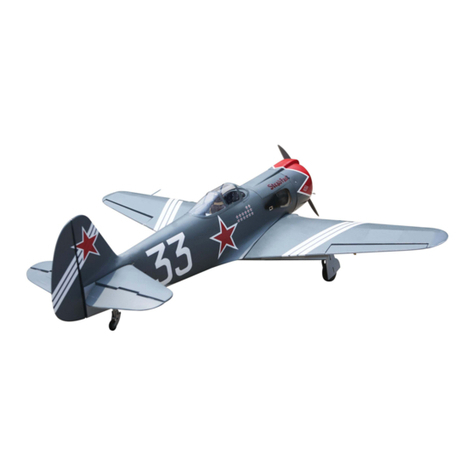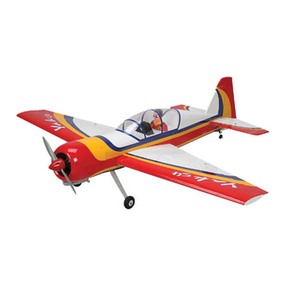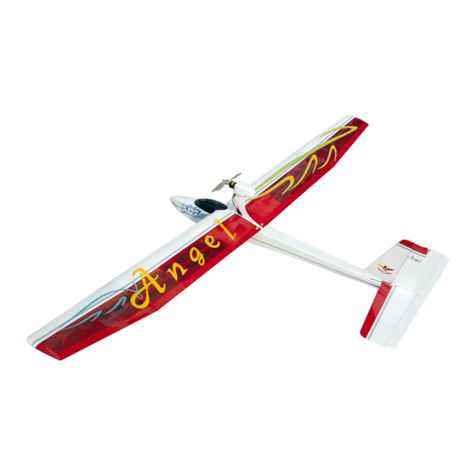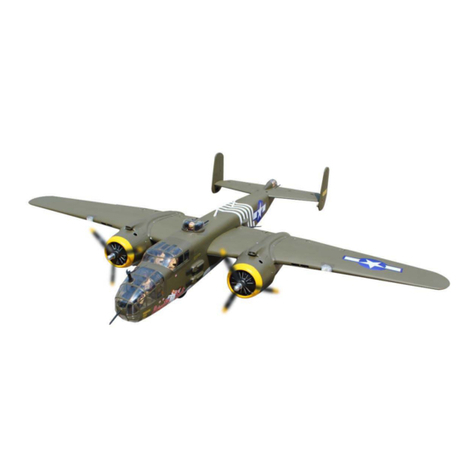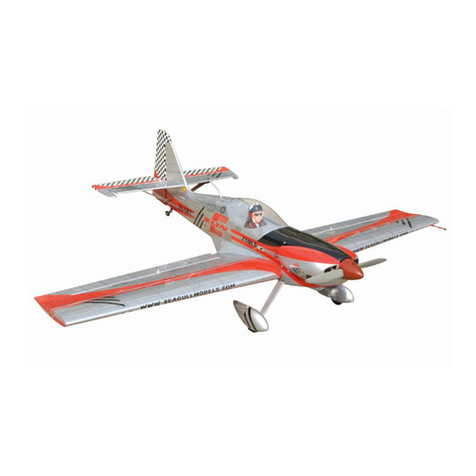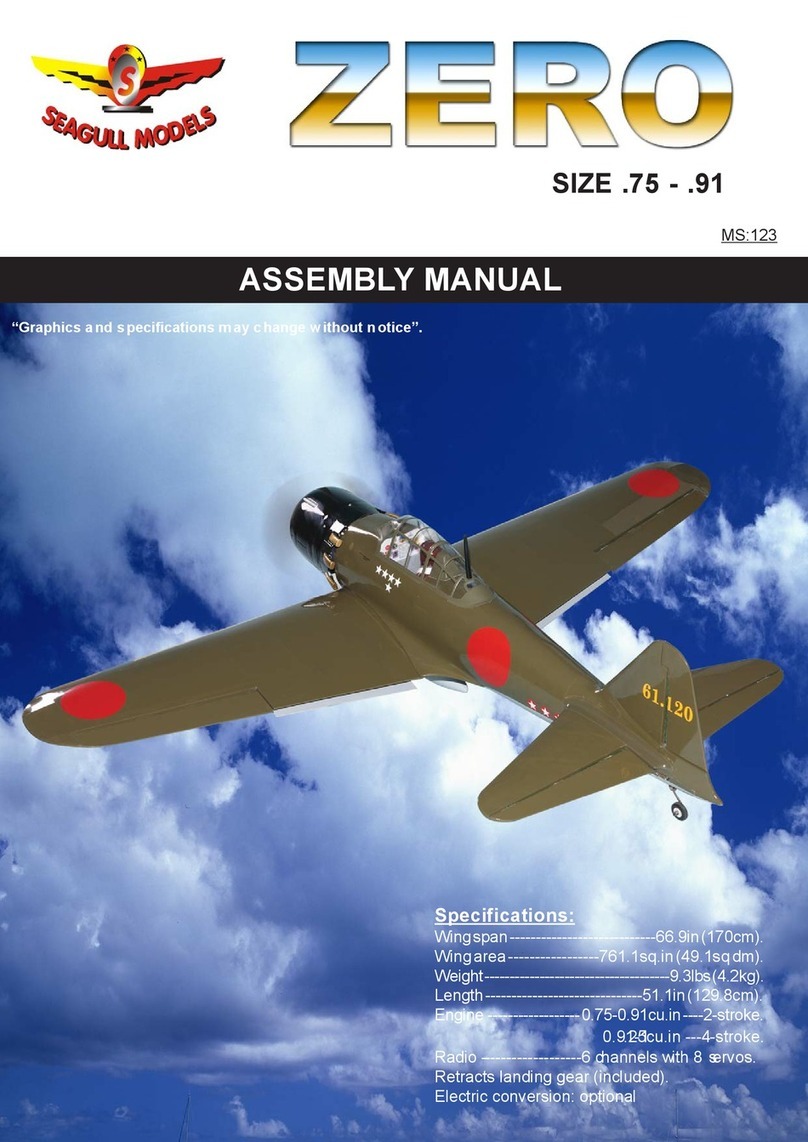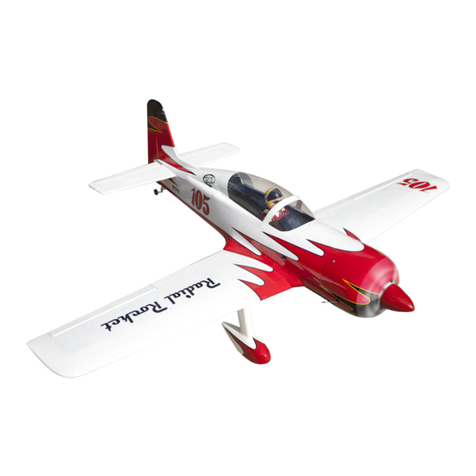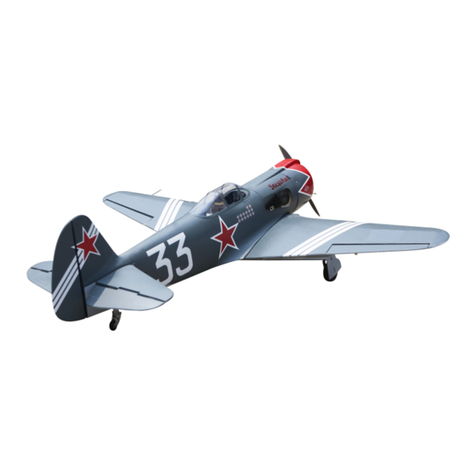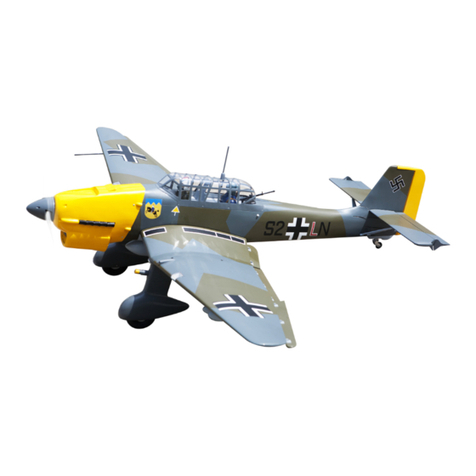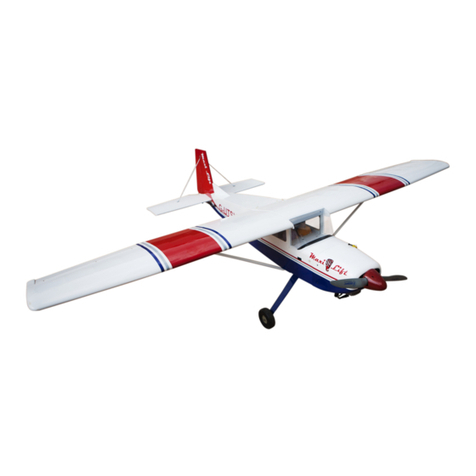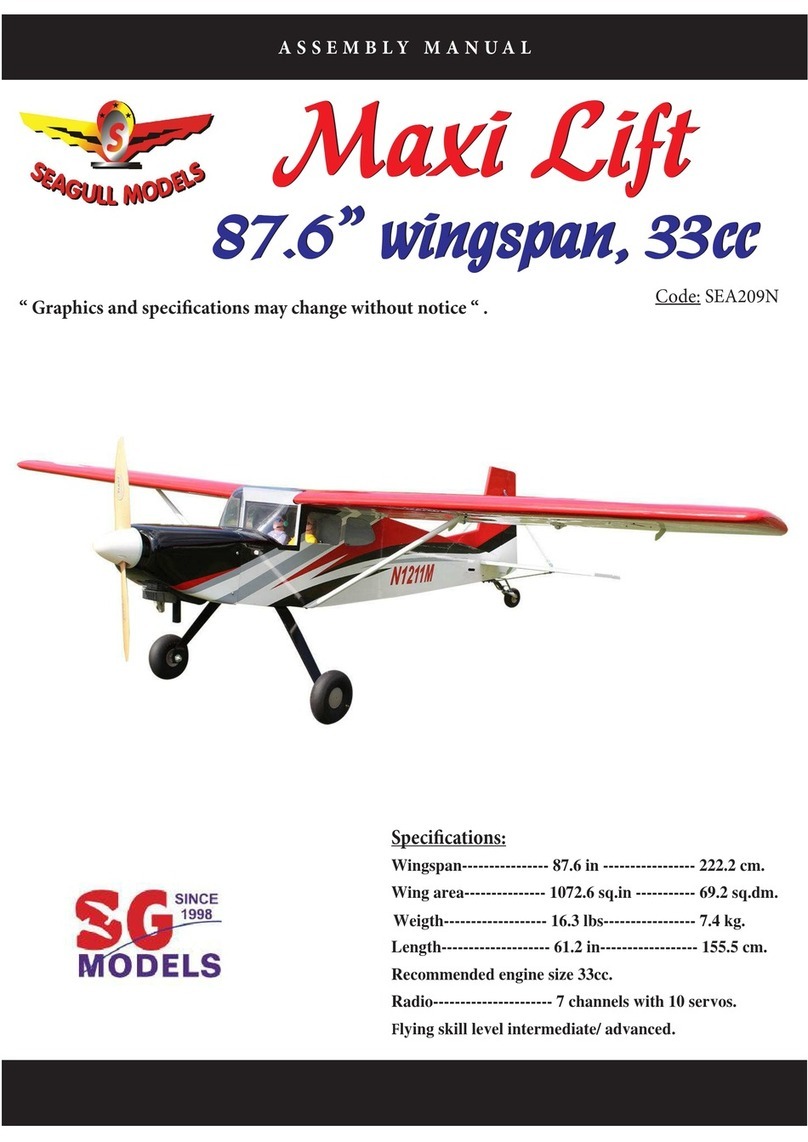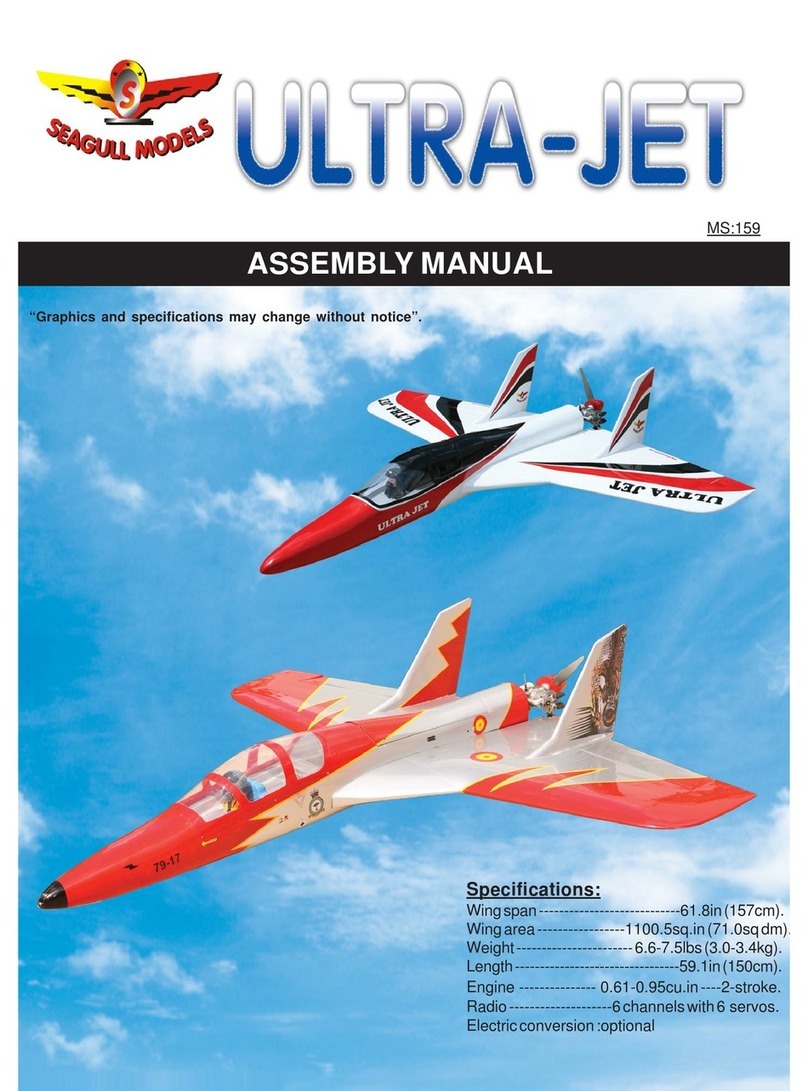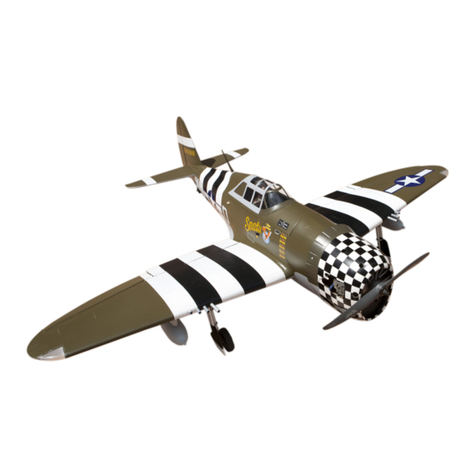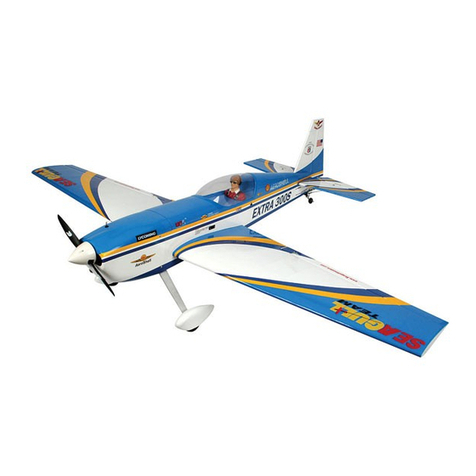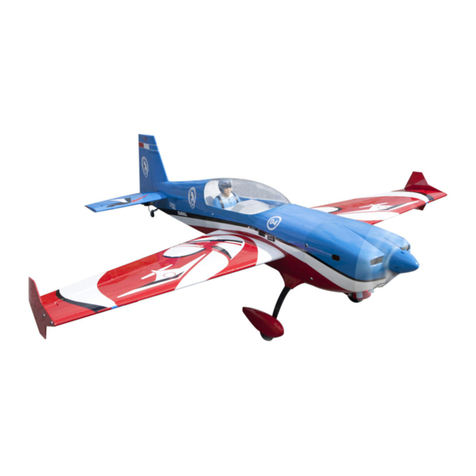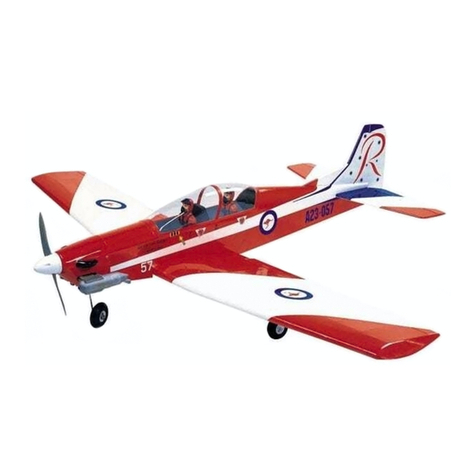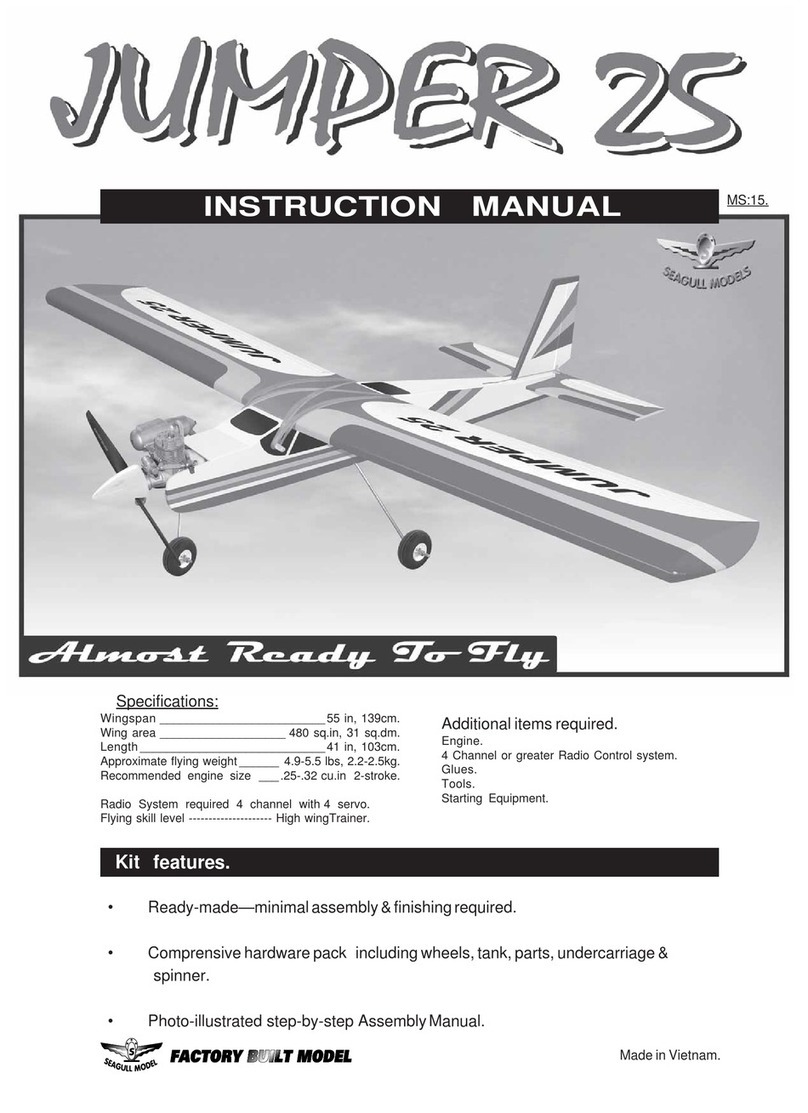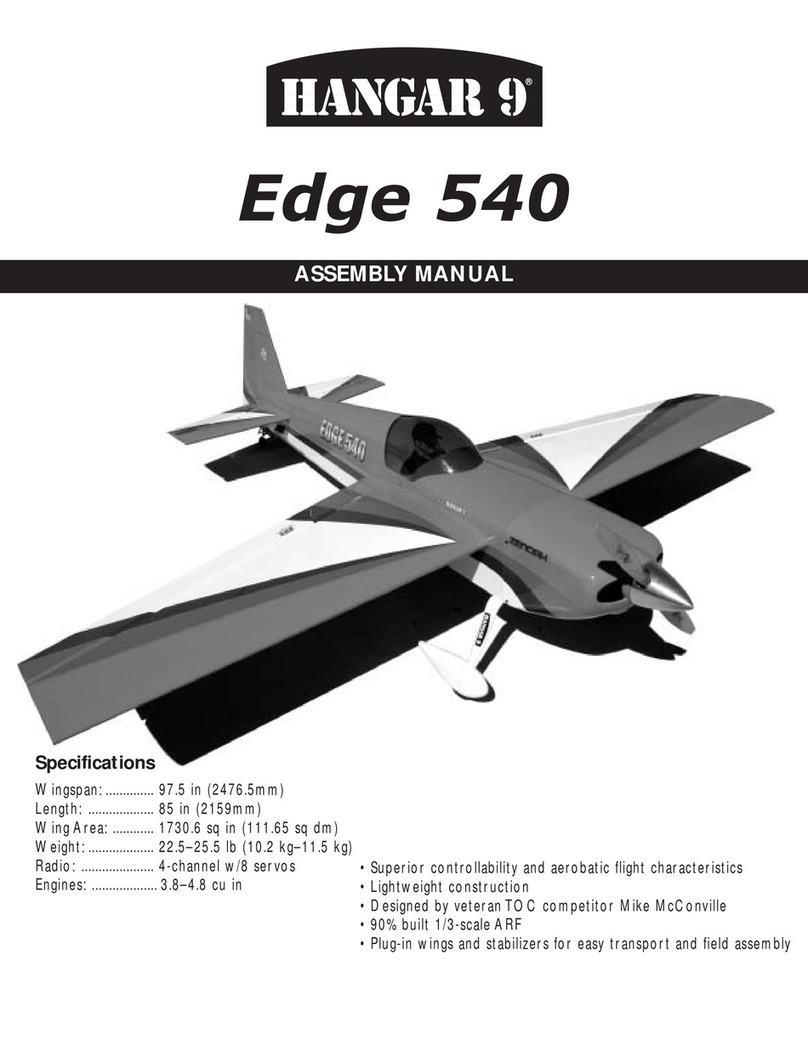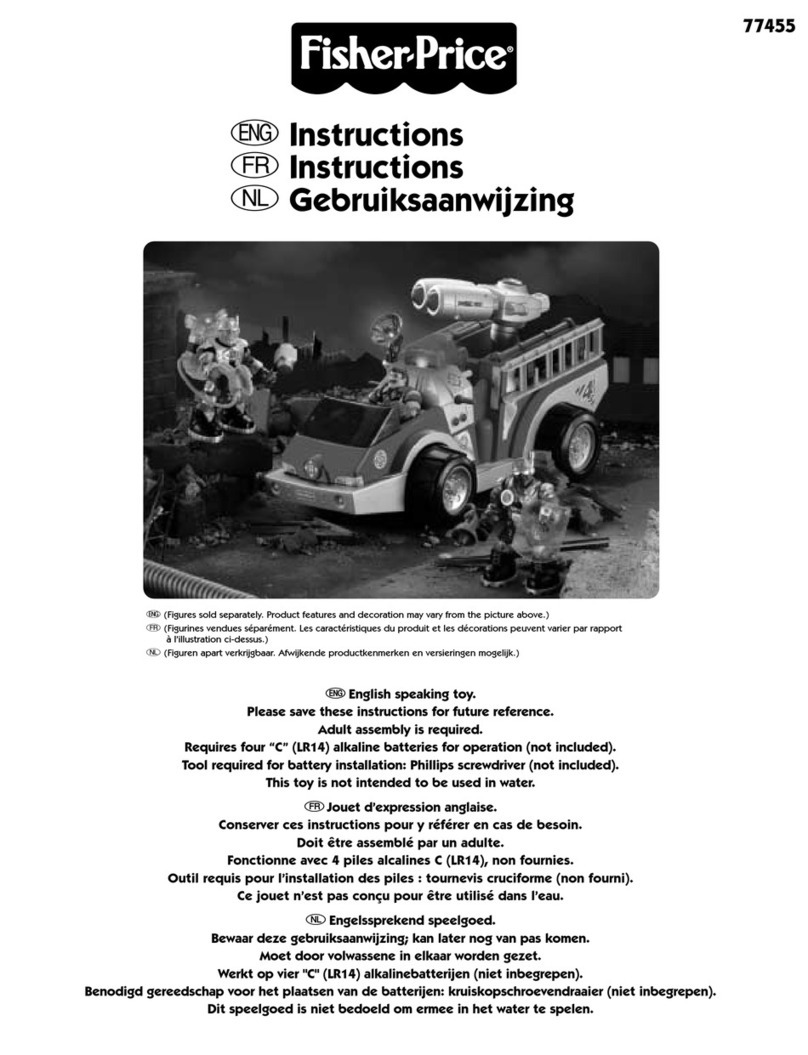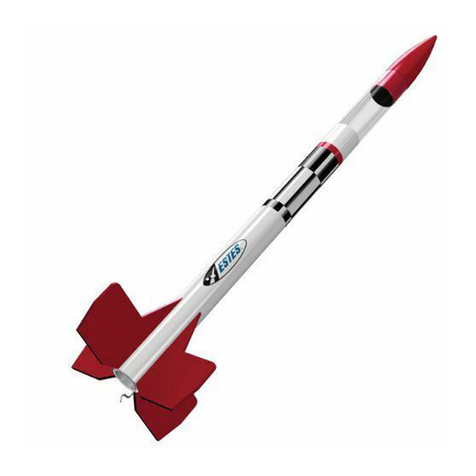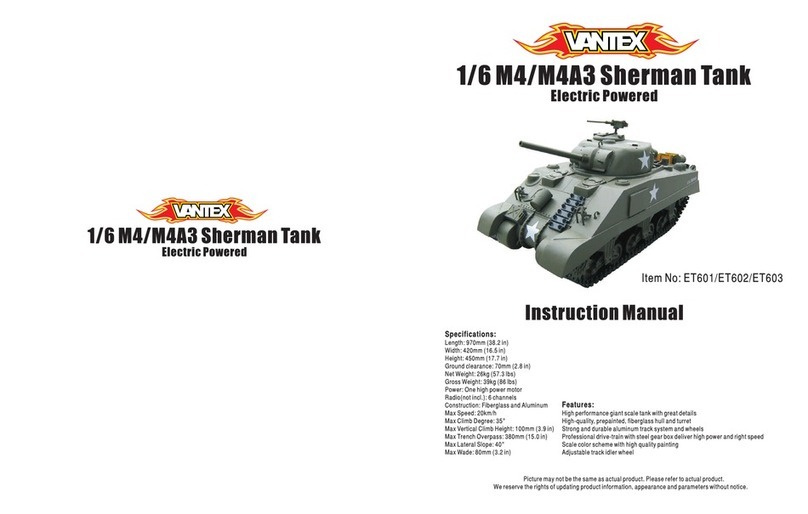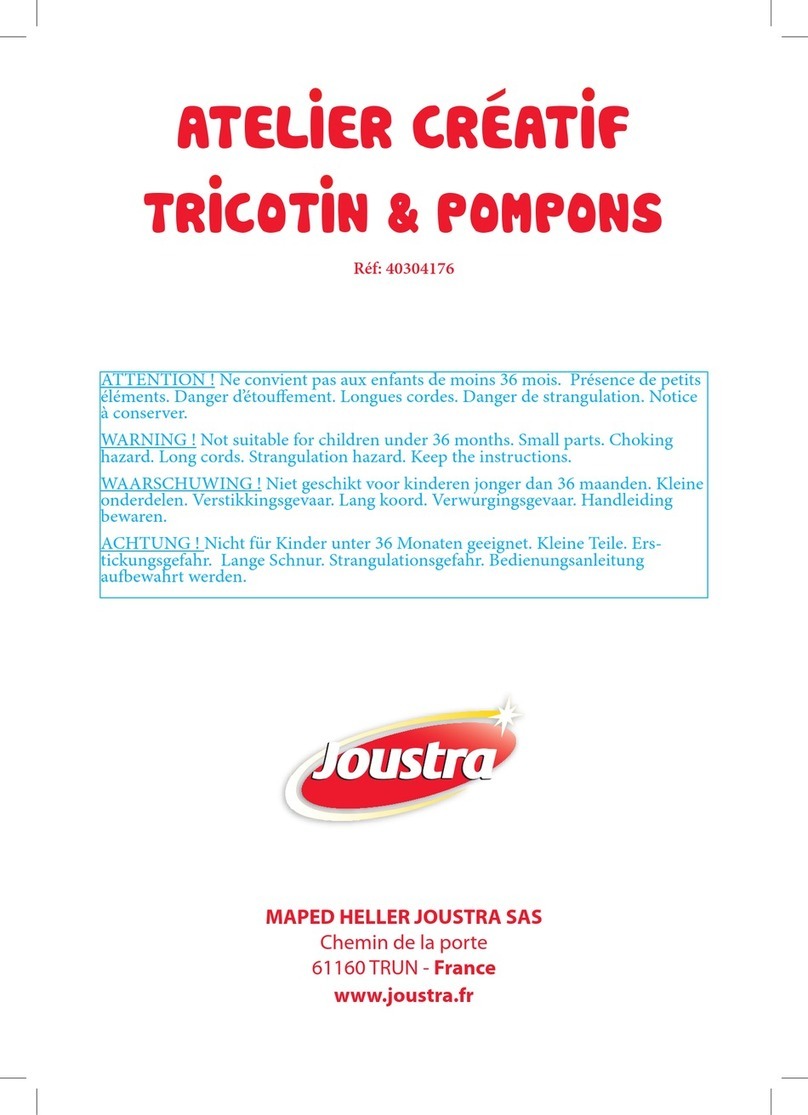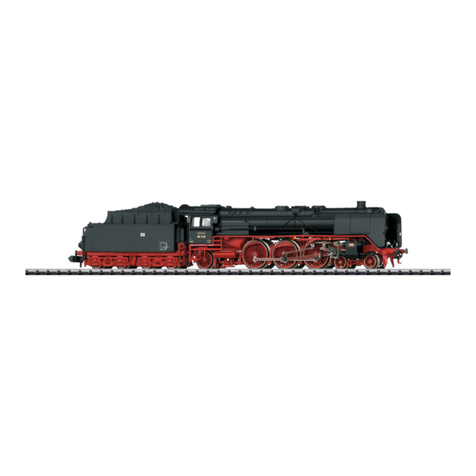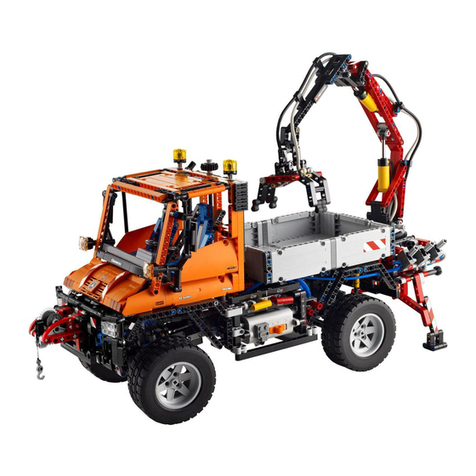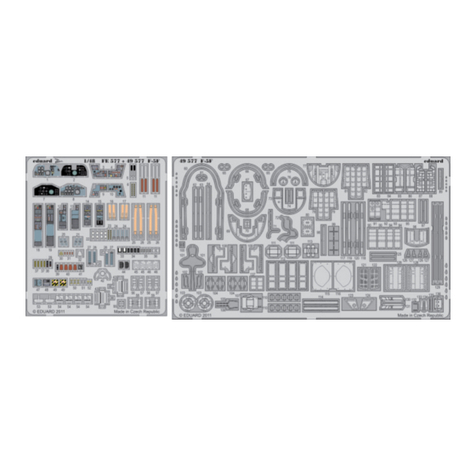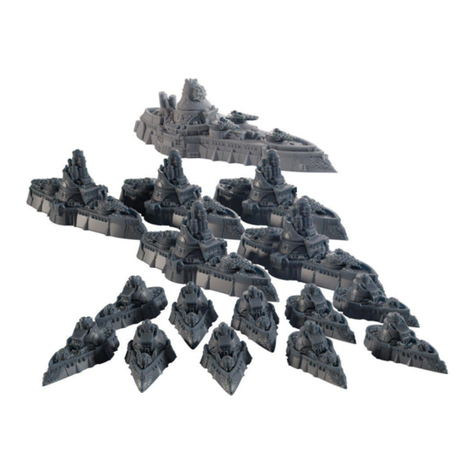16
Arising Star. Instruction Manual.
PREFLIGHT CHECK.
1) Completely charge your transmitter
and receiver batteries before your first day of
flying.
2) Check every bolt and every glue joint
in the Arising Star to ensure that everything
is tight and well bonded.
3) Double check the balance of the air-
plane. Do this with the fuel tank empty.
4) Checkthe control surfaces. Allshould
move in the correct direction and not bind in
any way.
5) If your radio transmitter is equipped
withdualrate switches doublecheckthat they
are on the low rate setting for your first few
flights.
6) Check to ensure the control surfaces
are moving the proper amount for both low
and high rate settings.
7) Check the receiver antenna. It should
be fully extended and not coiled up inside the
fuselage.
E) Check the throttle. Moving the
throttle stick forward should open the carbu-
retor barrel. If it does not, flip the servo re-
versing switch on your transmitter to change
the direction.
FLIGHT PREPARATION.
C) Check the elevator first. Pull back
on the elevator stick. The elevator halves
shouldmoveup. If it they donot,flip the servo
reversingswitchonyourtransmitter to change
the direction.
D) Check the rudder. Looking from
behind the airplane, move the rudder stick to
theright. Therudder should move totheright.
Ifitdoes not, fliptheservo reversing switch on
your transmitter to change the direction.
We wish you many safe and enjoy-
able flights with your Arising Star.
8) Properlybalance the propeller. Anout
of balance propeller will cause excessive vi-
bration which could lead to engine and/or air-
frame failure.
INITIAL FLYING/SPORT FLYING
Ailerons: 3/8” up 3/8” down
Elevator: 3/8 ” up 3/8” down
Rudder: 1/2” right 1/2” left
AEROBATIC FLYING
Ailerons: 1/2”up 1/2”down
Elevator: 5/8”up 5/8” down
Rudder: 1” right 1”left
Do not use the aerobatic settings for
initial test flying or sport flying.
4) By moving the position of the adjust-
able control horn out from the control surface,
you will decrease the amount of throw of that
control surface. Moving the adjustable con-
trol horn toward the control surface will in-
crease the amount of throw.
CONTROL THROWS.
2) Turnonthe radio system,and with the
trim tabs on the transmitter in neutral, center
the control surfaces by making adjustments
totheclevisesoradjustableservoconnectors.
The servo arms should be centered also.
1) We highly recommend setting up the
Arising Star using the control throws listed.
We have listed control throws for both initial
test flying/sport flying and aerobatic flying.
3) When the elevator, rudder and aileron
control surfaces are centered, use a ruler and
check the amount of the control throw in each
surface. The control throws should be
measured at the widest point of each sur-
face!
F) From behind the airplane, look at
the aileron on the right wing half. Move the
aileron stick to the right. The right aileron
should move up and the other aileron should
move down. If it does not, flip the servo re-
versing switch on your transmitter to change
the direction.
A) Check the operation and direction
of the elevator, rudder, ailerons and throttle.
B) Plug in your radio system per the
manufacture’sinstructionsandturn every thing
on.

















